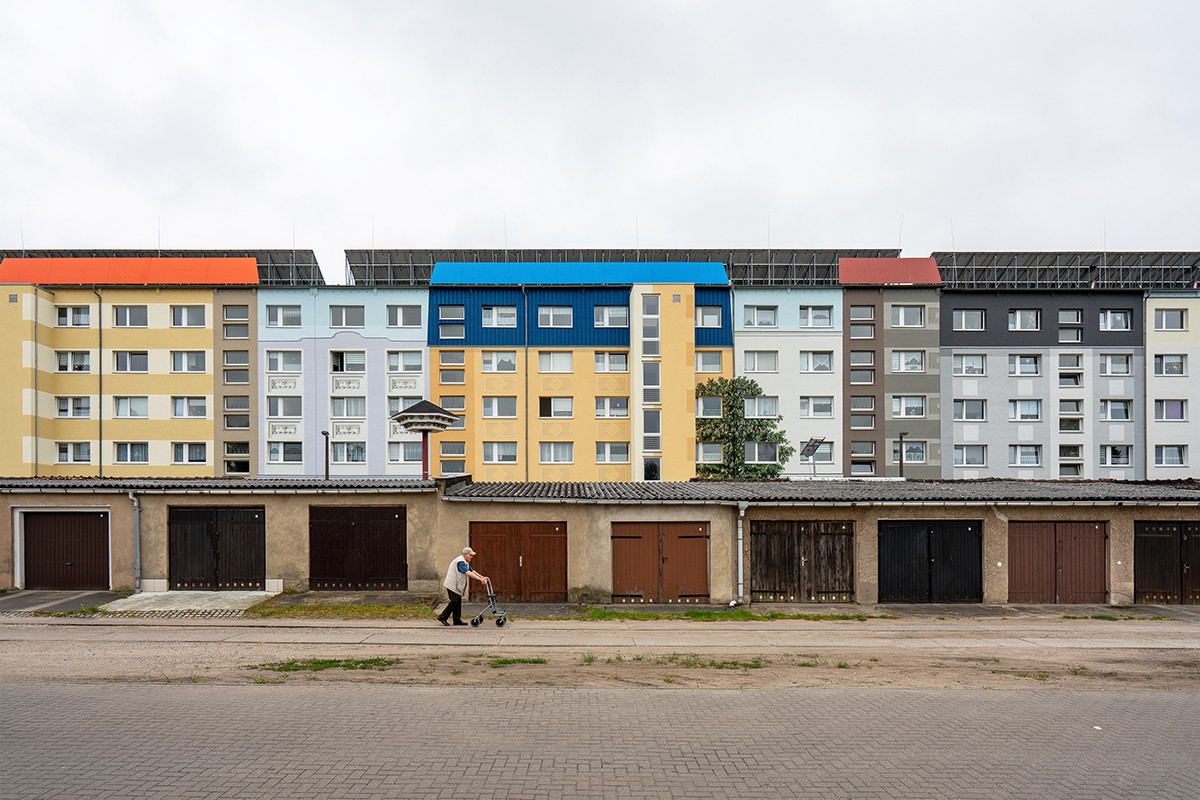Martin Maleschka
In his exhibition “Garagenland”, Martin Maleschka approaches the architecturally rarely noticed subject of the countless GDR garages from several perspectives: while a series of 108 photographs documents the immense external diversity of these functional buildings, which at first glance seem inconspicuous, an installation of garage utensils such as tools , body parts, etc. a trace to the worlds that unfold behind the garage doors. The photos and utensils are complemented by a period garage door from the “Am Plattenwerk” garage community in Eisenhüttenstadt. It illustrates the owner's innovative strength to secure his belongings and at the same time shows Maleschka's fascination for constructive details.
Because Martin Maleschka's view of the topic of “garages” is analytical and artistic at the same time. His photo series documents not only the enormous constructive spectrum of the construction task despite the scarcity economy, but also the associated design diversity, largely based on improvisation, in an area that is not generally defined as “architecture”. The examples shown demonstrate how individual ideas of beauty were realized - subversively, so to speak - despite politically ordered egalitarianism. After all, the garages are protective housing for the “car”, a particularly rare commodity in the GDR. But that's not all: for the majority of East Germans (and other Eastern Europeans), garages also fulfilled an important social function. They were realized in communities and functioned as a meeting point and retreat where one could evade surveillance and control. Due to their large number, the so-called garage complexes also conquered structural no man's land or simply "replaced" unrealized social buildings.
The special thing about Maleschka's topic is that many garages are still in their original condition today because of their functional orientation and therefore represent an authentic reservoir for architectural, artistic and social studies. Before they fall into disrepair or give way to booming new development districts, Martin Maleschka's work makes an irreplaceable contribution to the discussion about the facets of East German consciousness. Dismantling, weathering, vandalism and contemporary transformation all generate future research topics.
The exhibition “Garagenland” continues the gallery's commitment to the part of the architectural heritage of the former GDR that has previously received less public attention. The associated questions about East German identity and a contemporary concept of monuments were previously discussed in the exhibition “Preservation Studio Rellensmann / Casper – The Garage Manifesto” (2017) and the book presentation “Jens Casper, Luise Rellensmann – The Garage Manifesto” (2021). In the gallery discussion at the end of the exhibition, they are finally expanded to include international perspectives (including Natalija Yefemkina and Tinatin Gurgenidze).
Martin Maleschka (*1982) studied architecture at the BTU Cottbus-Senftenberg. The focus of his work as a photographer, author, artist and chronicler of “East Modernism” is the architectural art of the GDR. His highly acclaimed book “DDR. Construction-related art – art in public spaces 1950 to 1990” (2018) and his “Architecture Guide Eisenhüttenstadt” (2021). With numerous activities for the preservation of the GDR's architectural heritage, he is one of the most important actors of a generation that dedicates itself to the architectural culture of a vanished state with an open eye. After “From the Treasury” (2019), “Garagenland” is his second exhibition at the Architektur Galerie Berlin.
